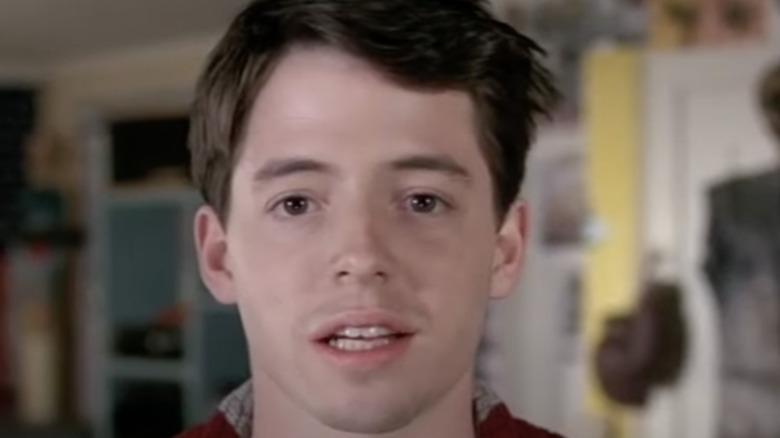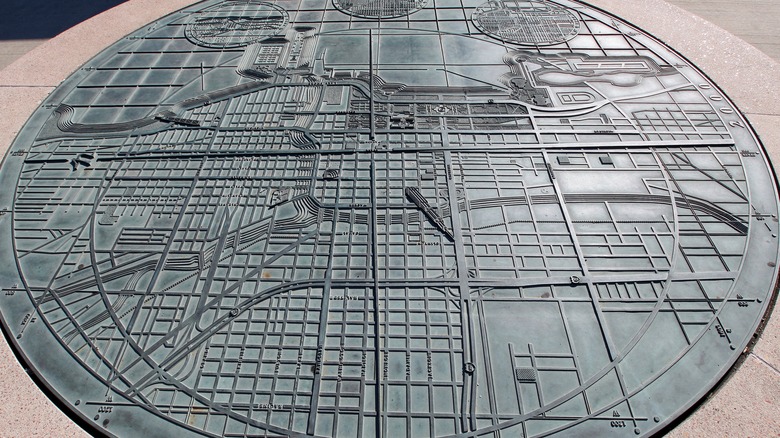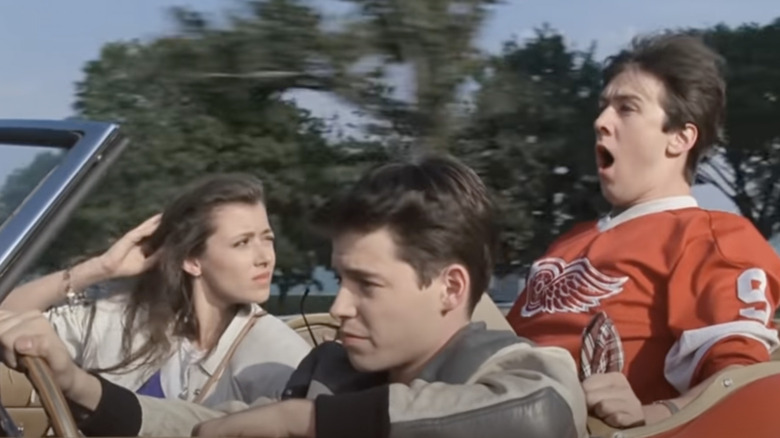Is It Possible To Fit All Of Ferris Bueller's Day Off Activities Into One Day?
"Ferris Buller's Day Off" was the kind of movie that put big ideas into the heads of bored high school students in the '80s, and embodied the very spirit of Generation X, most of whom had no desire to follow in the corporate wing-tips or sensible pumps of their Baby Boomer cum Me Generation predecessors. In the words of Ferris himself, "Life moves pretty fast. If you don't stop and look around once in a while, you could miss it," and, even more to the point of the day off, "The question isn't 'what are we going to do', the question is 'what aren't we going to do?'" (via Rotten Tomatoes).
Watching goofy trickster Ferris, lovely, surly Sloane, and chronically anxious Cameron wind their way through the wonderland of Chicago, it looked so easy to really suck the marrow out of life, especially if you lived in the suburbs of Chicago. But they really packed a lot into what would have been a school day: they borrow Cameron's dad's 1961 Ferrari (without permission, of course), see the sights from the top of the Sears Tower, watch businessmen at the Chicago Board of Trade, scam their way into a schmancy lunch, attend a Cubs game, appreciate art at the Art Institute of Chicago, crash a big parade, and lip-sync to both "Danke Schoen" and "Twist and Shout," pick up Cameron's dad's Ferrari at the parking garage, then hit a beach on the shores of Lake Michigan.
Mapping Out The Slack
Thankfully, for those of us who don't live in or near Chicago, the fine folks at Mel Magazine mapped out the places, routes, and drive times of this delightful tale that its director John Hughes said was a "love letter" to the city (per AMC). Mel Magazine breaks it down thusly ... From 8 a.m. to about 9:55 a.m., Ferris was getting his girlfriend and best friend together and onboard, along with excuses to get them out of school.
Then, they drop the Ferrari off at a parking garage, walk to the Sears Tower (a ten-minute walk, Mel estimates), where they ascend to the top and spend a few dreamy minutes looking over the city. Their next destination, the Board of Trade, is a six-minute walk. They watch the madness there before grabbing a probably 15-minute cab ride to a fancy restaurant, where they manage to steal the reservation of one "Abe Froman" and dine in style.
From lunch, they take another probably 15-minute cab ride to Wrigley Field to watch the Cubs play. The length of their visit there is unclear, but it's long enough for Ferris to catch a foul ball in what the announcer says is the fifth inning. Or, it might have been the 11th inning, according to Baseball Prospectus. Either way, it seems stressful for a high school kid who needs to be home by 6 p.m.
Linear Time and Cameron's Mind
Around 4 p.m., they take (again) a probably 15-minute cab ride to the Art Institute. Going by the Mel timeline, they couldn't have spent more than about 20 minutes there, because they're at the Von Steuben Day parade by 4:45 p.m. They pick up Cameron's dad's car between 5:00 and 5:15, after which Cameron has a meltdown about how many miles were put on his dad's car. Ferris and Sloane try to calm him down on the shores of Lake Michigan's Glencoe Beach, after which they soak in a stranger's jacuzzi somewhere from about 5:45 to 6 p.m. (when Ferris was supposed to be back home, "sick" in bed). Between 6:00 and 6:15 is the famous scene where Cameron "accidentally" destroys his dad's expensive car.
From there, Ferris walks Sloane home, almost gets caught by his principal, and is supposedly is back home by 6 p.m., parents none the wiser. Except, realistically, according to the people at Mel, who know the area, he would have been at the very least, a half-hour late. And that's not even taking into account all the gazing, freaking out, pontificating, and relaxing our three heroes are seen doing throughout.
So no, realistically, the activities don't hold up to linear time but who cares? Our heroes don't need to be constrained by the same things we are. Besides, if you buy into The Atlantic's theory, Ferris was only a figment of Cameron's imagination anyway, rendering time constraints irrelevant. Either way: Save Ferris.


